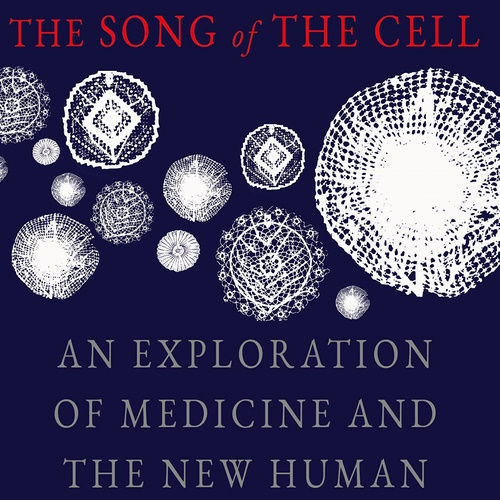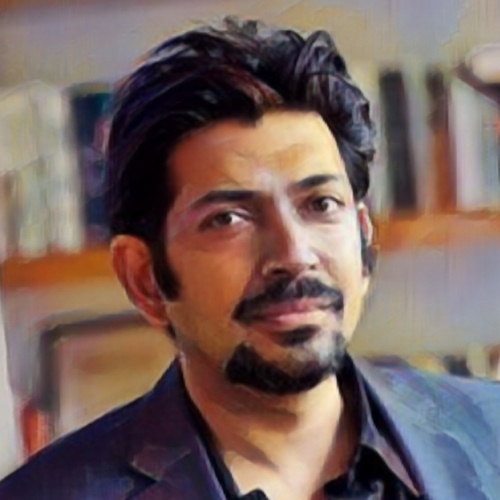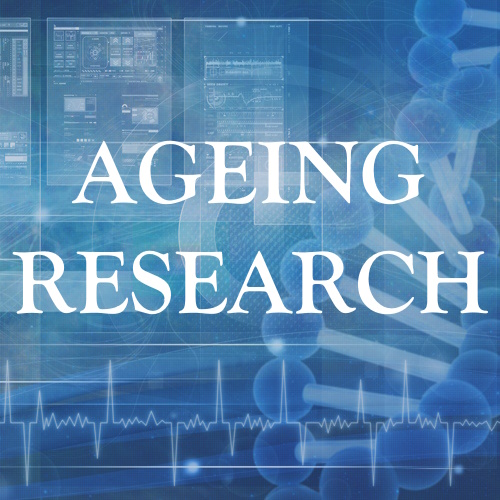The Song of the Cell: An Exploration of Medicine and the New Human
Story of how scientists discovered cells, written by Siddhartha Mukherjee, an Indian-born American physician and oncologist
From the author of The Emperor of All Maladies, winner of the Pulitzer Prize, and The Gene, a #1 New York Times bestseller, comes his most spectacular book yet, about the transformation of medicine through our radical new ability to manipulate cells. Rich with Mukherjee’s revelatory and exhilarating stories of scientists, doctors, and the patients whose lives may be saved by their work, The Song of the Cell is the third book in this extraordinary writer’s exploration of what it means to be human.
Mukherjee begins this magnificent story in the late 1600s, when a distinguished English polymath, Robert Hooke, and an eccentric Dutch cloth-merchant, Antonie van Leeuwenhoek looked down their handmade microscopes. What they saw introduced a radical concept that swept through biology and medicine, touching virtually every aspect of the two sciences, and altering both forever. It was the fact that complex living organisms are assemblages of tiny, self-contained, self-regulating units. Our organs, our physiology, our selves—hearts, blood, brains—are built from these compartments. Hooke christened them “cells”.
Review
There's not doubt this this is a comprehensive and thought-provoking book covered the long history of the study of the cell - and it is amazing how recently some basic cell function was discovered. Siddhartha Mukherjee walks you through the whole discovery process so you understand how ideas crystallised over time - which is a great way to follow the same though process rather than just learn today's state-of-the-art.
However, if you're looking for a popular science introduction to the structure and behaviour of cells, this might be a slightly longer read than is necessary. In my opinion (or for my needs, others may enjoy the meandering) it was a little too descriptive of details that didn't add to the knowledge (e.g. "Autumnal leaves were falling around me like snowflakes, presaging the winter.") and some of the analogies didn't really make sense or help (e.g. genes as a fixed, preselected playlist). Worse, given the audience, lots of medical terminology was dropped in that I had to keep looking up (e.g. defervesced - meaning a reduction in fever).
In summary, great if you want a sauntering read invoking the wonders of science and discovery, but not so much if you're hoping for an easy read text book providing an introduction to cellular biology.
Key points from The Song of the Cell
I highlighted 100 key observations whilst reading the book.
- In the late 1830s, scientists Matthias Schleiden and Theodor Schwann proposed that all animal and plant tissues were made of cells.
- A cell is the unit of life. But that begs a deeper question: What is “life”?
- In a narrow sense, a cell is an autonomous living unit that acts as a decoding machine for a gene.
- It is the laboratory of reactions that enables life.
- Vitalists were convinced that living beings could not possibly be built out of the same chemicals that were pervasive in the natural world.
- Preformation: the idea that the human fetus was already fully formed, albeit miniaturized.
- To locate the heart of normal physiology, or of illness, one must look, first, at cells.
- It is the membrane that defines the boundary of a cell.
- How the cell communicates with its outside was solved in 1972.
- The cytoskeleton maintains the form of the cell, just as a bony skeleton maintains an organism’s form.
- A liver cell, for instance, contains several million ribosomes.
- Proteins make it possible to make other proteins.
- The nucleus is the command center; the captain’s bridge of the cell. It is surrounded by a porous two-layered membrane.
- If you stretched DNA from every cell in the human body it would stretch from the Earth to the sun and back again more than sixty times.
- We still know little about its organizational structure.
- The proteasome disposes of unwanted, or misfolded, proteins.
- For the first decade of the twenty-first century, the field of gene therapy was forced into a deep winter.
- The retina is immune privileged — it is not actively surveyed by an immune response and therefore highly unlikely to generate a severe reaction to an infectious agent.
- Lumevoq is currently in late-phase clinical trials for LHON patients with early vision loss.
- Cell division in animals might be broadly divided into two purposes or functions: production and reproduction.
- Some cells opt out of the cycle altogether remaining quiescent, e.g. neurons.
- Few changes are visible under a microscope during G1 but in molecular terms, this first gap is monumental.
- The S phase comes from synthesis of duplicate chromosomes.
- G2 exists as a final checkpoint before cell division because cells cannot afford chromosomal catastrophes.
- Fission yeast reproduce much like human cells, by splitting in the middle. The more common yeast cells divide by “budding.”
- Proteins act in concert to regulate the transitions in the phases of cell division.
- It took almost a decade after the publication of “Early Stages of Fertilization” to convince the medical community that infertility was, in fact, a “disease.”
- Genetic manipulation of the human embryo to arrest diseases (or, perhaps, to enhance human abilities) seems, every day, to become an inevitable destination
- Multicellularity evolved independently, and in multiple different species, not just once, but many, many times.
- Single cells can become multicellular aggregates over a mere few generations.
- Serum differs from plasma: it is the fluid that’s left over after blood has been clotted.
- It is virtually impossible to envision the development of modern surgery, safe childbirth, or cancer chemotherapy without the invention of blood transfusion.
- Verve Therapeutics, has proposed an audacious strategy for reducing blood levels of LDL cholesterol.
- Sek’s pathbreaking work would identify scores of genes that, when inherited in an altered form, increase the risk of heart attacks.
- White blood cells were not even noticed, or discovered, for centuries.
- White blood cells are “white” only in the sense that they are not “red.”
- Neutrophils live for just a few days after entering the circulation.
- If you mutate the genes of the innate immune system flies become infested with microbes and begin to decompose.
- Sometime in the near future, we will learn to pitch the innate immune system’s wrath against cancer cells.
- Antigen: a substance that generates an antibody.
- Monoclonal antibodies, abbreviated MoAb, could now be used as detection agents or as markers for cells.
- The physiology of T cells remained a mystery as late as the 1970s.
- Killer T cells: T lymphocytes that recognize virus-infected cells and souse them with toxins until they shrivel and die.
- Our immune system is built on both the recognition of self and of its distortion.
- Viruses and bacteria are not just cleared from the blood by antibodies but are also cleared from infected cells by T cells.
- A normal CD4 count is around 500 to 1,500 cells per cubic millimeter of blood. Patients with full-blown AIDS had only 50, or even 10.
- The collapse of CD4 cells cascades rapidly into a collapse of the immune system in total.
- The pharmacopeia against the HIV virus has increased year by year.
- Humans who inherit two copies of a mutant CCR5 gene are resistant to HIV infection.
- Where do I end and you begin? Biologically speaking, the self is demarcated not by what is asserted but by what is invisible.
- T regulatory cells zero in on sites of inflammation and secrete soluble factors— anti-inflammatory messengers— that dampen the activity of T cells.
- Aside from very subtle distinctions in genetic markers, T cells and T reg cells are anatomically indistinguishable.
- What, precisely, the immune system is reacting against in lupus remains a mystery,
- Steven Rosenberg had drawn native T cells out of malignant tumors, expanding their numbers to several million, and then infused them back into patients.
- To attack a cancer immunologically, one has to first make it re-visible (to coin a word) to the immune system.
- A novel form of immunotherapy for cancer, termed “checkpoint inhibition” is the removal of tolerizing checks on T cells.
- Researchers were increasingly imagining the immune system as a knowable machine, with movable— manipulable, decipherable, changeable— cogs, gears, and parts.
- Almost a fifth of all the human drugs discovered in 2018 had something to do with the immune system.
- Coronaviruses similar to SARS-COV2 had circulated through human populations for millennia,
- The most severe cases of SARS-COV2 infection occurred in patients— typically men— who lacked the ability to elicit a functional type 1 interferon signal after infection.
- The pandemic energized immunology, but it also exposed gaping fissures in our understanding.
- Organs are anatomically defined so that the cells that reside in the organ can act in concert.
- Cells of the heart, cultivated outside the body, have the autonomous capacity to pulsate rhythmically.
- Each muscle cell has thousands of lined ropes — bands of actin in parallel with bands of myosin.
- Every cell is inherently designed to communicate with the next.
- Specialized nerve-like cells, resident in the heart, generate paced, rhythmic electrical impulses that stimulate the contraction.
- Once the electrical impulse reaches the axon’s end, these vesicles react to its arrival by discharging their cargo. These chemicals cross the space between one cell and the next— the synapse— and start the process of stimulation all over again.
- A single neuron can have positive inputs and negative inputs from other neurons.
- Some glial cells possess branching extensions that wrap themselves around neurons, forming myelin sheaths that act like electrical insulation.
- Some are wanderers and scavengers, dedicated to clearing debris and dead cells from the brain.
- Yet others supply nutrients to the brain, or mop up transmitters from the neuronal synapses to reset neuronal signals.
- Our brains make synaptic connections in vast excess, and then we pare back the excess.
- Microglia nibble at the synaptic connections between neurons and pare them away.
- Deep brain stimulation is being attempted for a variety of neuropsychiatric and neurological disorders, including obsessive compulsive disorder (OCD) and addiction,
- Electrical stimulation of cellular circuits is trying to become a new kind of medicine.
- Insulin is synthesized by a particular subset of islet cells in the pancreas— beta cells— and its secretion is stimulated by the presence of glucose in the blood.
- Every human begins his or her life as a single pluripotent cell.
- The nephron is the site where the blood and kidney cells meet, and the first drops of urine are generated.
- Hepatocytes in the liver are functionally specialized for both storage and waste disposal, secretion, protein synthesis, among dozens of many other functions.
- Alcohol is detoxified in a series of reactions, until it is broken down into a harmless chemical.
- Reusable products from the dead cells are recycled.
- Cells that form cartilage in joints decay dramatically with age.
- A single stem cell can produce billions of mature red and white cells— and an entire organ system of an animal.
- Thousands of bone marrow transplants are performed each year now, for dozens of diseases.
- It is the subset of genes that is turned “on” and “off” in a heart cell, or a skin cell, that determines its identity.
- Yamanaka made a stem cell out of a fibroblast — he had turned biological time backward.
- The allure is this: you take your own cell — every degenerated organ, or tissue, could be regenerated.
- The skeleton turns out to represent one of the most elaborately complex of cellular systems.
- Superficially, bone might look like a chunk of hardened calcium, but it is, in fact, made of a multiplicity of cells.
- In osteoarthritis, the cells that were being worn out— in its first stages— were the cartilage-making stem cells, and they could no longer keep up the genesis of cartilage.
- In cell biological terms, it might be easier to imagine injury, or aging, for that matter, more abstractly, as a furious battle between a rate of decay and a rate of repair.
- Cancer is, in a sense, a disorder of internal homeostasis: its hallmark is that cell division is dysregulated.
- Any individual specimen of cancer has a permutation of mutations that is unique to it.
- Even a single breast tumor is actually a collage of mutant cells— an assemblage of nonidentical diseases.
- The relationship between cancer and stem cells, in short, is turning out to be far too uncomfortably close.
- The kidney and spleen, notably— never seem to attract metastasis.
- We can name cells, and even systems of cells, but we are yet to learn the songs of cell biology.
- There are still gaps in our understanding of the interconnectedness of cells.
- Cellular physiology is thus the basis for human physiology, and cellular pathology is the basis for human pathology.
- Vertex and ViaCyte, are already enrolling patients to infuse them with pancreatic insulin-producing cells created by making stem cells turn into pancreatic cells.
Visit website: https://siddharthamukherjee.com/the-song-of-the-cell/
Siddhartha Mukherjee
Indian-American physician, biologist and author, assistant professor of medicine at Columbia University
Details last updated 16-Mar-2023






